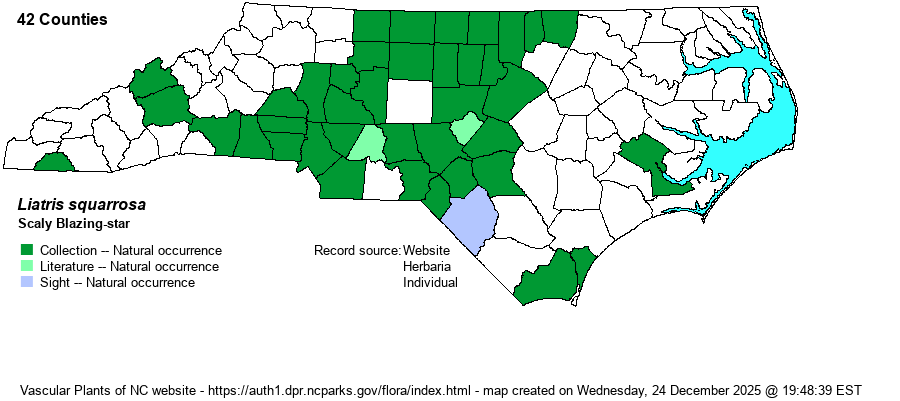| Author | Michaux | |
| Distribution | Piedmont and Sandhills; scarce in the low elevation Mountains and in the southern Coastal Plain. The record from Craven County is from an oak-hickory forest 6.8 miles south of New Bern. The New Hanover County specimen (NCSC) is without an image in SERNEC. A Brunswick County specimen was collected in 2022. Note that records from the southern coastal areas might not be truly native populations; and the Brunswick site was "along roadside of Camp Branch Road under powerline ROW S of Egypt Rd; perhaps planted here as a number of odd plants are growing at this location" (M. Basinger).
MD to southern MI and MO, south to northwestern FL and eastern TX. | |
| Abundance | Fairly common to locally common in most of the Piedmont, though very rare to absent in the extreme northwestern parts; rare in the lower Mountains, and absent at higher ones. Frequent in the Sandhills, but very rare elsewhere in the southern Coastal Plain. Absent over nearly all of the Coastal Plain. | |
| Habitat | Dry to mesic sandy to clayey soils of pine-oak woodlands, Longleaf Pine-Wiregrass uplands, barrens and glades, rocky slopes, and powerline clearings. It tends to be somewhat more numerous in circumneutral to slightly acidic soil, and is not normally found in strongly acidic soil. |
| Phenology | Flowering and fruiting late June-August. | |
| Identification | The early flowering and open, spreading inflorescence (not spike-like) readily identifies this species. Each head is broad (often nearly 1 inch across), with long and curved florets, and the involucral bracts are triangular, sharp-pointed, and recurved. Plants are only 1-2 feet tall, but the broad and relatively rounded inflorescence of rosy pink heads is quite attractive and distinctive. | |
| Taxonomic Comments | The taxon found in NC is the nominate variety.
| |
| Other Common Name(s) | None | |
| State Rank | S4 [S4S5] | |
| Global Rank | G5 | |
| State Status | | |
| US Status | | |
| USACE-agcp | | |
| USACE-emp | | |

